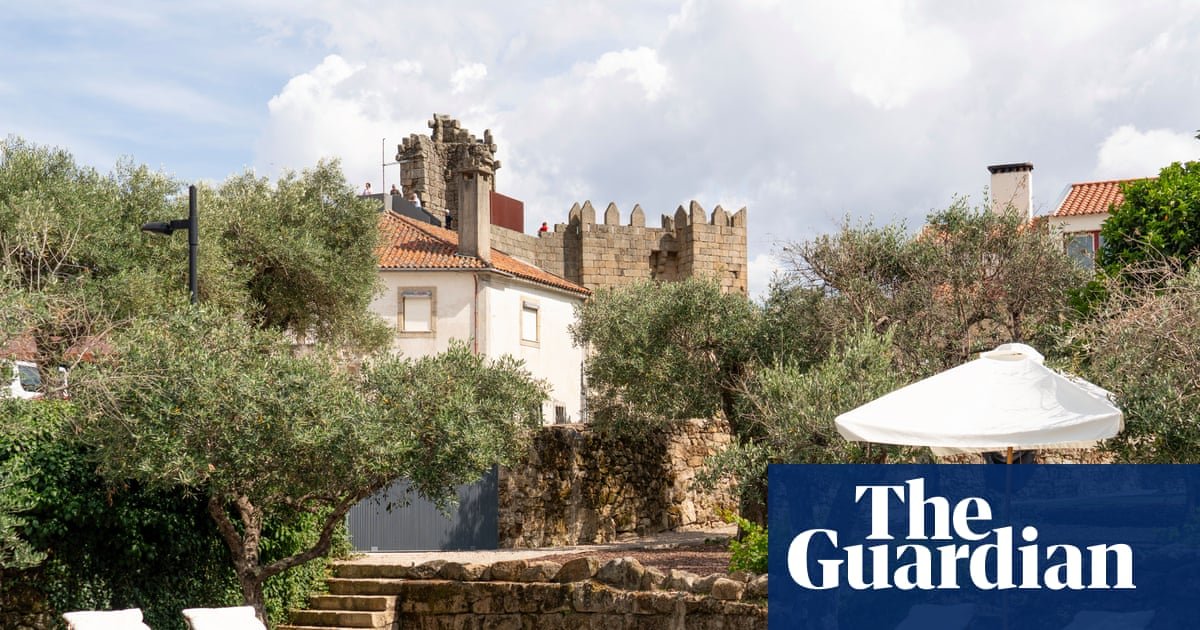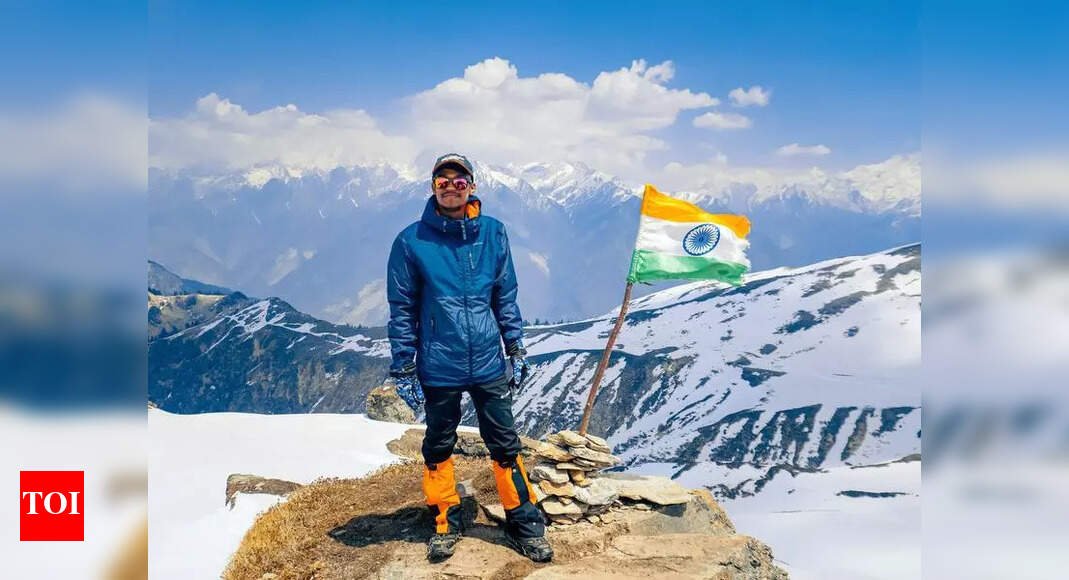Solo Travellers
Explore Portugal’s historic hilltop hamlets in a free electric hire car | Portugal holidays

Twisting along roads flanked by cherry trees, granite boulders, vines and wildflower-flecked pastures, I wind down the windows and breathe in the pure air of Portugal’s remote, historic Beira Interior region. The motor is silent, the playlist is birdsong and occasional bleating sheep; all is serene. “This is easier,” I say to myself with a smile, recalling my previous attempt to visit the Aldeias Históricas – a dozen historic hamlets bound by a 1995 conservation project – using woeful public transport. Revisiting this unspoilt pocket of Portugal, 155 miles (250km) north-east of Lisbon, near the border with Spain, is going to be effortless in an EV. And, best of all, the transport doesn’t cost me a penny.
An hour before, I arrived in Castelo Novo, a four-hour train ride from the capital, and currently the sole hub of the Aldeias Históricas’s Sustainable Urban Mobility Scheme. It was launched in 2022 to address local transport issues by providing five free-to-hire electric vehicles, alongside other community-supporting projects. It sounded too good to be true, but I booked the maximum three-day rental – enough time to see at least nine of the villages. I was informed that if I arrived by train, someone would meet me at the station.
Sure enough, Duarte Rodrigues welcomes me like an old friend. “The project’s main focus is tourism to the historic villages, but some of the cars are used for the community, to take elderly people to the market or distribute meals,” he says on the gorgeous drive to the medieval hamlet of Castelo Novo, 650 metres up the slopes of the Serra da Gardunha. Take-up was nearly equal between tourists and residents, he adds.
A few minutes later, outside the romanesque town hall, Duarte hands me the keys to my Megane E-Tech with a wave. It’s worth staying for a night at Pedra Nova, a gorgeously renovated boutique B&B, but it needs to be booked well in advance and I am keen to make the most of my time in the EV. Having decided to skip popular Piódão and Monsanto – now a House of the Dragon jet-setting destination – my first stop is Belmonte. Like all 12 aldeias, this hazy hilltop town played a pivotal role in Portugal’s identity. A Brazilian flag flutters behind a statue of local legend Pedro Álvares Cabral, the first European to “discover” Brazil. I stroll through the old Jewish Quarter’s single-storey granite houses to Bet Eliahu synagogue, built 500 years after King Manuel I’s 1496 decree expelling Jews from the kingdom.
Continuing to 12th-century Linhares da Beira, I wander the leafy slopes of the Serra da Estrela – mainland Portugal’s highest range. Similar to much-loved Monsanto, the hamlet lies between and atop giant granite boulders. From the largest rocky outcrop, where the castle’s crenellated walls rise, the Mondego valley’s panorama is endless. Other than an airborne paraglider and a man hawking hand-carved magnets in the car park, there’s not a soul in sight.
I walk a stretch of slabbed Roman road that once linked Mérida in Spain to Braga, north of Porto, and remember why I adore these villages. History is bite-size, hushed and unhurried, the antithesis of my home in the Algarve. After a brief drive, I park up and plug in outside the medieval defences of the most populated aldeia.
Founded in the ninth century, handsome Trancoso hides behind hefty, turret-topped walls that have witnessed royal nuptials and numerous skirmishes. Today, walking beneath weathered porticos and streets lined with hydrangeas, it feels like the calmest place in the world. As does Solar Sampaio e Melo, a palatial 17th-century guesthouse – repurchased by a descendant of the original owners in 2011 – with an honesty bar and a pool shaded by turrets.
Following a late breakfast of sardinhas doces, Troncoso’s sardine-shaped, almond-stuffed sweets, I make for Marialva. The satnav states 30 minutes, but with back-road detours to gawp at giant granite mounds around Moreira de Rei, I reach the massif-mounted castle well after lunch. Occupied by the Aravos, a Lusitanian tribe, then the Romans and Moors, this was a crucial site for the advance of the Christian Reconquista.
An old chap in a checkered shirt sits hammering almonds from their shells outside his home. I buy a bulging bag for €7 and gobble a handful inside the semi-ruined citadel, where Bonelli’s eagles soar and cacti reclaim the stone. The flavour transports me to my Algarvian childhood holidays, when I’d hide from the sun (and my parents) under almond trees. For a second, it feels like Portugal hasn’t changed in 30 years. Perhaps here, far from the coast, little has.
The journey to Castelo Rodrigo is filled with awe, particularly around the craggy valley sliced by the Côa river. Just upstream is a unique collection of rock art etchings from three eras – prehistory, protohistory and history – and Faia Brava, Portugal’s first private nature reserve, co-founded by biologist Ana Berliner, her husband and others. In 2004, the couple renovated Casa da Cisterna into a boutique guesthouse, and on its wisteria-draped terrace, Ana welcomes me with sugared almonds and fresh juice. I enquire about Faia Brava (Ana guides guests on excursions to the reserve and the prehistoric rock art) and whether they’re concerned about tourism growing.
“These small villages benefit a lot [from tourism] because there aren’t many people living here or many opportunities, so people are moving to the big cities,” she tells me. “If you retain your people, and your young people spend those days living here, it’s very good.”
As I poke around the castle ruins, I mull over how the Portuguese writer José Saramago described Castelo Rodrigo in Journey to Portugal (1981): “desolation, infinite sadness” and “abandoned by those who once lived here”. I’m reassured that Ana is right. Lisbon’s tourism boom has created Europe’s least affordable city for locals. Yet, in these hinterlands, the right tourism approach could help preserve local customs.
Unlike most of the aldeias, Castelo Rodrigo was founded by the Kingdom of León. It became Portuguese when the 1297 treaty of Alcanizes defined one of Europe’s oldest frontiers. Reminders of Spain linger, such as the Ávila-style semicircular turrets and ruined Cristóvão de Moura palace, constructed under the Habsburg Spanish kings. Portuguese locals later torched it.
With no charging station in Castelo Rodrigo (work is under way to expand the project to other villages, including the installation of chargers and the opening of new bases with additional cars in 2026), I drive to Figueira de Castelo Rodrigo, the modern town below. At Taverna da Matilde flaming chouriço scents the dining room, and the pork loin – bisaro, an indigenous part-pig, part‑boar – is perfect. I sleep like a prince at Casa da Cisterna.
Breakfast is a casual, communal affair of buttery Seia mountain cheese and pão com chouriço, followed by a quick stop at Castelo Rodrigo’s wine cooperative to collect a case of robust Touriga Nacional (tours and tastings €18pp). In Almeida, a star-shaped military town, I roam the grassy ramparts before continuing south. Swallows soon replace eagles, and granite fades into gentle farmland.
I breathe in the silence, standing by Castelo Mendo’s twin-turreted gate. It feels like the world has stopped. I tiptoe across the ruined castle keep and am transfixed by the endless panorama of olive groves, cherry trees and occasional shepherd’s huts.
In search of coffee, I step into a dimly lit stone room below a sign that reads D Sancho. Inside is an old-world retail marvel. Photos of popes, boxes of wine, retired horseshoes, mounds of old coins and “mystery boxes” that I’m tempted to spend a tenner on. A hunched woman with a smile gifts me a shot of ginjinha, the local cherry liquor, and signals me to sit with her on the bench outside. We don’t speak, yet I somehow feel a connection to her land. I buy a bottle in the hope of taking that feeling home.
My final stop, Sortelha, comes with high expectations – Saramago promised a perfectly preserved medieval town. Hulking walls cradle a 16th-century cluster of stone houses dominated by a castle that crowns an outcrop. Almost on cue, fog and showers shroud it all in mystery. I retreat to O Foral, where plates of bacalhau (salted cod) are bathed in pistachio-hued local olive oil.
Parking back in Castelo Novo with a panic-inducing 7% charge showing on the dash, I am grateful to return the keys, and use the time before my lift to the station to survey the Knights Templar’s former domain from the 12th-century castle.
Stopping outside the red door where Saramago reportedly once stayed, I ponder how he would describe these villages 44 years later. Hopefully, he’d recount that, for the traveller, timeless magic remains, but those returning and reviving have vanquished any melancholy.
Complimentary EV rentals of one to three days can be booked online at plataformaaldeiashistoricas.com; reservations open about 75 days in advance. For details of the 12 Aldeias Históricas, visit aldeiashistoricasdeportugal.com
Solo Travellers
Freedom With Purpose and Poetry on Roads | Ranchi News

Solo Travellers
‘Travelling alone can act as a reset button’ | Ranchi News

In a conversation with TOI’s Shikha Yadav, city-based therapist and mental health expert Dr Keshav Jee explains how travelling solo is no longer just a leisure trend but a potential wellness tool. Excerpts:- Q. What benefits can solo travel have on one’s mental and emotional well-being? A: Solo travel is a deeply personal experience. From choosing your destination to deciding where to stay and what to eat, it’s all in your control. This sense of agency can be incredibly empowering, especially for those who often feel emotionally dependent on others. Travelling alone can act as a reset button. Whether you’re going through a burnout, heartbreak, or a professional setback, time away from your routine allows for introspection. You’re free from judgment, from social expectations, and you get to live as your most authentic self. That, in itself, can lead to significant emotional growth. It’s challenging at first, but once you experience it, it can become one of life’s most enriching adventures. Q: How can being alone in an unfamiliar place positively rewire thought patterns or behaviour? A: Immersing yourself in a new culture forces you to adapt. You’re exposed to unfamiliar languages, customs, and social norms. Navigating these by yourself builds resilience and problem-solving skills. You become more self-reliant. Also, it helps dismantle negative assumptions about yourself, leading to a healthier mindset and improved confidence. Q. Is solo travel a healthy coping mechanism during life transitions, like breakups, job loss, or burnout? A: Absolutely, but with precautions. If done mindfully, it is a healthy way to cope with life changes. It creates space for self-reflection without distractions. However, it’s important to stay grounded: avoid excessive substance use, and don’t make reckless choices in the name of “finding yourself.” Q. How does solitude during travel differ from loneliness?A: Solitude is intentional and nourishing. It’s choosing to spend time with yourself, whether it’s after a stressful work week or just to breathe freely without external pressures. Solo travel lets you embrace this kind of solitude. Loneliness, on the other hand, is feeling isolated even when you’re with others. Some introverts may often confuse solitude with loneliness. Q. What precautions should solo travellers, especially women, keep in mind to make it a rewarding experience?A: Planning is key. Research your destination well, especially in terms of safety. Choose places with accessible public transport, accommodation and try to immerse yourself in the local culture. The goal must be to have a perfect personal trip and with stories, and lessons you’ll carry for life.
Solo Travellers
How to holiday safely this summer under the Mediterranean sun

In recent years, many of the Mediterranean’s iconically sunny destinations like Italy, Greece, France and Spain have become increasingly besieged by devastating heatwaves, leading unsuspecting tourists to come up with creative solutions to keep cool.
“Our hotel had AC technically, but it groaned like a dying fan and gave up by mid-afternoon,” said Fowkes. “The tap water came out warm. There were no blackout curtains. I tried sleeping with a wet towel on my chest and a bottle of frozen water under my knees and still woke up dizzy. At one point, I moved my pillow to the stairwell and lay on the tiles like a Victorian fainting lady because that was the only surface remotely cool.”
-

 Brand Stories6 days ago
Brand Stories6 days agoBloom Hotels: A Modern Vision of Hospitality Redefining Travel
-

 Brand Stories23 hours ago
Brand Stories23 hours agoCheQin.ai sets a new standard for hotel booking with its AI capabilities: empowering travellers to bargain, choose the best, and book with clarity.
-

 Destinations & Things To Do7 days ago
Destinations & Things To Do7 days agoUntouched Destinations: Stunning Hidden Gems You Must Visit
-

 AI in Travel7 days ago
AI in Travel7 days agoAI Travel Revolution: Must-Have Guide to the Best Experience
-

 Brand Stories3 weeks ago
Brand Stories3 weeks agoVoice AI Startup ElevenLabs Plans to Add Hubs Around the World
-

 Brand Stories2 weeks ago
Brand Stories2 weeks agoHow Elon Musk’s rogue Grok chatbot became a cautionary AI tale
-

 Destinations & Things To Do20 hours ago
Destinations & Things To Do20 hours agoThis Hidden Beach in India Glows at Night-But Only in One Secret Season
-

 Asia Travel Pulse3 weeks ago
Asia Travel Pulse3 weeks agoLooking For Adventure In Asia? Here Are 7 Epic Destinations You Need To Experience At Least Once – Zee News
-

 AI in Travel3 weeks ago
AI in Travel3 weeks ago‘Will AI take my job?’ A trip to a Beijing fortune-telling bar to see what lies ahead | China
-

 Brand Stories3 weeks ago
Brand Stories3 weeks agoChatGPT — the last of the great romantics

You must be logged in to post a comment Login